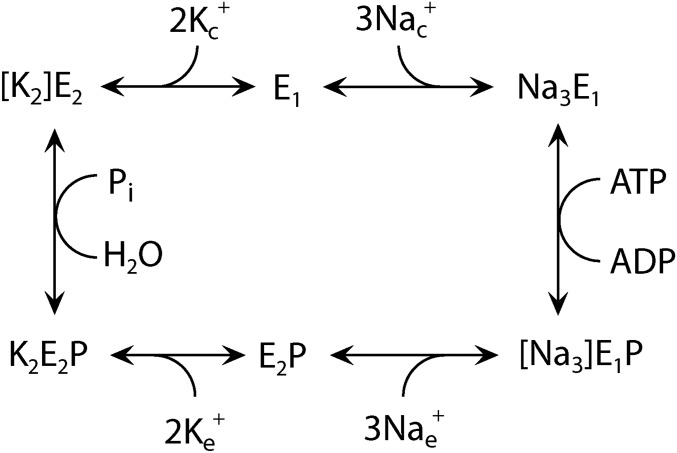Fig. S1.
Na+,K+-ATPase reaction cycle. E1 and E2 represent the main conformational states of the enzyme that are Na+ selective and K+ selective, respectively. P indicates phosphorylation from ATP at the conserved aspartate of the P-type ATPase signature sequence. During the transport process, the Na+ and K+ ions become occluded [i.e., bound in the protein without access to the medium on either side of the membrane (shown in brackets)]. Free ions are labeled c and e for cytoplasmic and extracellular, respectively. The H+,K+-ATPase functions by a similar, but electroneutral, mechanism, with the 3 Na+ being replaced by 1 or 2 H+ and 1 or 2 K+ being countertransported.

